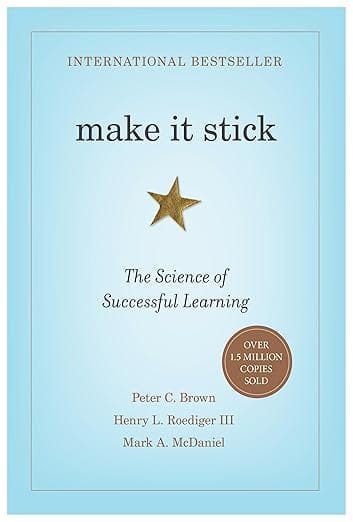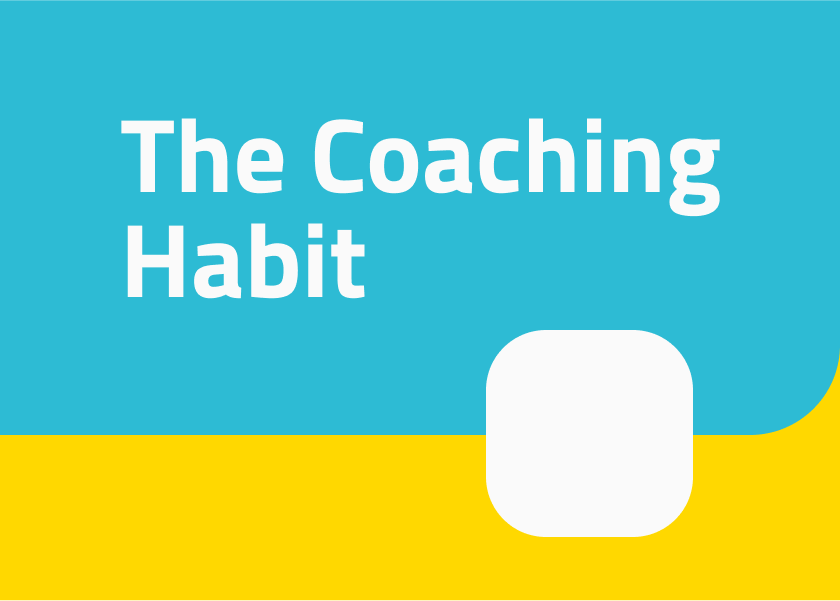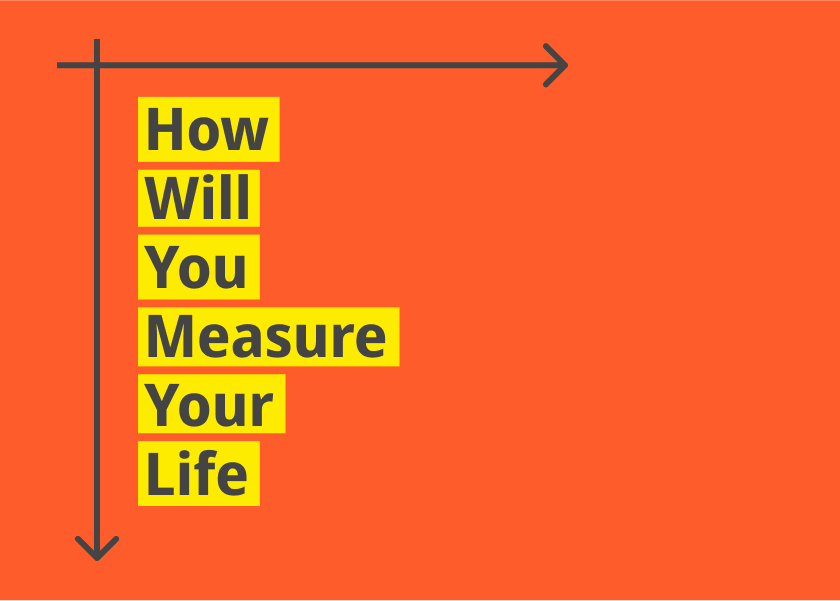Make It Stick by Brown, Roediger III and McDaniel - Summary
Learn how to learn, and you can increase your abilities. Rereading and repetition don't lead to durable learning. Instead, embrace effortful learning. Quizzing yourself and retrieval practice are powerful tools. Space out your study sessions, and make learning active.

The following is a summary and review of the book Make It Stick by Brown, Roedinger III and McDaniel.
Listen to ShelfHelp's podcast summarising the book Make It Stick.
Is Your Studying a Waste of Time? Discover the Science of Successful Learning
Are you spending hours studying, only to find that the information doesn’t stick? Many of us rely on study habits that are not only ineffective, but actually create an illusion of mastery. Make It Stick: The Science of Successful Learning by Peter C. Brown, Henry L. Roediger III, and Mark A. McDaniel, dives into the research on how we learn and remember, revealing evidence-based strategies that can transform your learning. This article will save you time by presenting a comprehensive overview, focusing on actionable tips that will significantly improve your study habits and help you to learn more effectively.
Table of Contents
- About the Author
- Who Should Read This Book?
- Key Insights and Themes
- Detailed Summary
- Review
- Actionable Takeaways
- FAQs
- Conclusion
About the Author
Make It Stick brings together the expertise of three authors: Peter C. Brown, a storyteller, and two cognitive scientists, Henry L. Roediger III and Mark A. McDaniel. Roediger and McDaniel have dedicated their careers to studying learning and memory. Their research, supported by grants and collaborations, seeks to translate cognitive science into educational science. This collaboration combines scientific rigor with practical application, making the book both credible and accessible.
Who Should Read This Book?
This book is not just for students. It's for anyone who wants to learn more effectively and remember longer.
- Students: From secondary school to university, students will learn how to study smarter, not just harder.
- Teachers and Coaches: Educators can use these principles to design better learning experiences.
- Trainers: Those in business, industry, and the military will find value in the evidence-based strategies to improve training programs.
- Lifelong Learners: Individuals wanting to hone their skills will benefit from the practical advice on mastering new knowledge.
- Anyone who wants to improve their learning: The core concepts are universally applicable to anyone wishing to better their learning outcomes.
Key Insights and Themes
Here are the key takeaways and main ideas from Make It Stick:
- Effortful Learning: Learning is more effective when it involves effort and struggle.
- Retrieval Practice: Self-quizzing and actively retrieving information from memory is a more effective study method than rereading.
- Spaced Repetition: Spacing out study sessions over time is more effective than massed practice (cramming).
- Interleaving: Mixing up different but related topics during study sessions improves learning.
- Embrace Difficulties: Difficulties and challenges during learning can enhance understanding and retention.
- Avoid Illusions of Knowing: Fluency with material does not equal mastery; self-testing is crucial.
- Structure Building: Extract underlying principles from new experiences to apply them later.
- Mental Models: Construct mental frameworks that connect new knowledge with what you already know.
- Metacognition: Understanding your own learning processes is key to effective learning.
Detailed Summary
The book is structured around several key concepts, each explored in detail:
- Learning Is Misunderstood: The book highlights that many commonly used study techniques are ineffective. Rereading and repetition do not lead to durable learning. People often rely on intuition, which is not always accurate. The most effective strategies are often counter-intuitive. People tend to favour methods that feel more productive, even if they are not.
- Rereading is a common strategy, but it is time-consuming, doesn't lead to durable memory, and can create an illusion of mastery.
- Repetition alone does not enhance learning.
- Many people are given bad advice on how to study.
- To Learn, Retrieve: This chapter discusses the power of retrieval practice, also known as self-quizzing.
- Self-testing is a more effective learning strategy than rereading.
- Quizzes at the beginning and end of lessons help to reinforce the material.
- Low-stakes quizzes can improve student performance.
- Retrieving information from memory strengthens the neural pathways that allow you to access the information.
- Frequent quizzes increase attendance in lectures.
- Mix Up Your Practice: This chapter emphasizes the benefits of interleaving.
- Interleaving involves mixing up different but related topics during practice.
- Interleaved practice is more effective than studying one topic at a time.
- Blocked practice (studying one topic until it’s mastered before moving to the next) is less effective than interleaved practice.
- Embrace Difficulties: This chapter challenges the idea that learning should be easy.
- Desirable difficulties like reading slightly out-of-focus text or omitted letters can improve recall.
- When the outline of a lecture does not match the text, the effort to reconcile the ideas can improve comprehension.
- The added effort increases understanding and learning, so long as the difficulty can be overcome.
- Avoid Illusions of Knowing: This chapter focuses on the importance of self-awareness in learning.
- Fluency with a text can create an illusion of mastery.
- Students who do not quiz themselves tend to overestimate how much they have learned.
- Regular self-quizzing helps to recalibrate understanding of what you do and do not know.
- Calibration is the act of aligning your judgments of what you know and don’t know with objective feedback.
- Get Beyond Learning Styles: This chapter debunks the idea of learning styles.
- The notion that people learn best when information is presented in their preferred style is not supported by research.
- Instead, focusing on rule learning and structure building is more effective.
- People who can extract underlying principles from new experiences are more successful learners.
- Those who link key ideas into a mental structure are also more successful learners.
- Increase Your Abilities: This chapter explores ways to enhance your intellectual capabilities.
- Your intellectual abilities are to a large degree within your control.
- Growth mindset, the idea that abilities can be developed, is crucial.
- Mnemonic devices can aid in retrieving information.
- Brain training improves self-efficacy and confidence, but the benefits are more likely due to better habits.
- The brain's neural circuits are shaped by experience and can continue to develop through adulthood.
- Make It Stick: This concluding chapter offers practical advice on how to apply the learning strategies.
- Take charge of your own learning and follow a simple but disciplined strategy.
- Practice retrieval by quizzing yourself.
- Space out your study sessions and allow time to elapse between practice.
- Interleave different problem types during practice.
- Elaborate on material to add layers of meaning.
- Use generation by trying to explain key ideas beforehand.
- Calibration helps you to avoid illusions of mastery.
- Mnemonic devices help you to store and retrieve information.
- The most successful students take responsibility for their own learning.
Review
Make It Stick is an excellent book that presents complex research in an accessible way. Its strengths include:
- Evidence-Based: The book’s claims are supported by numerous research studies.
- Practical Advice: The strategies are concrete and easy to implement.
- Clear Explanations: Complex ideas are explained in a clear and concise manner, with the use of stories and examples.
However, the book has some weaknesses:
- Repetitive: Key ideas are repeated, which is intentional but may feel redundant to some readers.
- Not a Quick Fix: The book is not a simple how-to, and it requires engagement with the ideas to be beneficial.
- Overwhelming for some: The amount of strategies discussed in the book could be overwhelming for some readers.
Actionable Takeaways
Here’s how to apply these lessons in real life:
- Implement Retrieval Practice: Instead of rereading, test yourself on the material. Use flashcards or questions at the end of chapters.
- Space Your Study Sessions: Don't cram! Review material at increasing intervals.
- Interleave Topics: Mix different subjects or problem types during study.
- Embrace Difficulties: Choose study methods that require effort; do not aim for ease.
- Create Mental Models: Integrate new information with what you already know and explain concepts in your own words.
- Use Mnemonic Devices: Create memory aids to remember arbitrary or complex information.
- Reflect on Your Learning: Take time to review what you've learned, make connections and consider how to improve.
- Be an active learner: Make the effort to generate new ideas and explain concepts to others.
- Test frequently: Frequent testing not only reinforces material, it helps you to identify areas where you are struggling.
FAQs
- What is "Make It Stick" about?"Make It Stick" explores the science of successful learning, focusing on evidence-based strategies to improve memory and understanding. It challenges traditional study habits, advocating for active learning methods such as retrieval practice and spaced repetition.
- Is "Make It Stick" worth reading?Yes, especially for anyone interested in optimising their learning. The book’s insights are universally applicable, and the actionable tips can significantly improve learning outcomes for students, teachers and professionals.
- What is retrieval practice?Retrieval practice involves actively recalling information from memory, such as by self-quizzing. It is a more effective way to learn and retain information than rereading.
- What is spaced repetition?Spaced repetition is a learning technique that involves reviewing material at increasing intervals of time. It is more effective than massed practice or cramming.
- What is interleaving?Interleaving is the technique of mixing up different topics during practice sessions, instead of studying one topic until it’s mastered.
Conclusion
Make It Stick offers a transformative approach to learning. By understanding and applying the evidence-based strategies outlined in the book, you can dramatically improve your learning efficiency and retention. Don’t waste another moment on ineffective study techniques.
As an Amazon Associate, ShelfHelp may earn money from qualifying purchases. Needless to say, ShelfHelp only includes affiliate links to books we recommend and think are worth your time reading.




